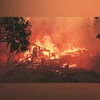In this context, a recent research paper published by the World Bank gives interesting insights regarding the distributional consequences of climate change and global warming in South Asia. The paper uses spatially detailed data on climate shocks and relative wealth to examine household and firm exposure to extreme heat and floods in the wake of increased climate change-induced weather shocks. Across South Asian countries, places with lower wealth or poorer households are more exposed to heat, in both urban and rural areas. Additionally, in urban areas, places with lower wealth are more exposed to flooding. After all, poorer households have less resources to invest in adaptation, use lower-quality housing and infrastructure, and have less access to post-disaster relief mechanisms than better-off households. Poverty may deter investment that has a cooling effect. The poor are also more exposed to climate shocks because they face financial constraints and are less able to relocate to safer places.
To read the full story, Subscribe Now at just Rs 249 a month
Already a subscriber? Log in
Subscribe To BS Premium
₹249
Renews automatically
₹1699₹1999
Opt for auto renewal and save Rs. 300 Renews automatically
₹1999
What you get on BS Premium?
-
Unlock 30+ premium stories daily hand-picked by our editors, across devices on browser and app.
-
Pick your 5 favourite companies, get a daily email with all news updates on them.
Full access to our intuitive epaper - clip, save, share articles from any device; newspaper archives from 2006.
Preferential invites to Business Standard events.
Curated newsletters on markets, personal finance, policy & politics, start-ups, technology, and more.
Need More Information - write to us at assist@bsmail.in
)